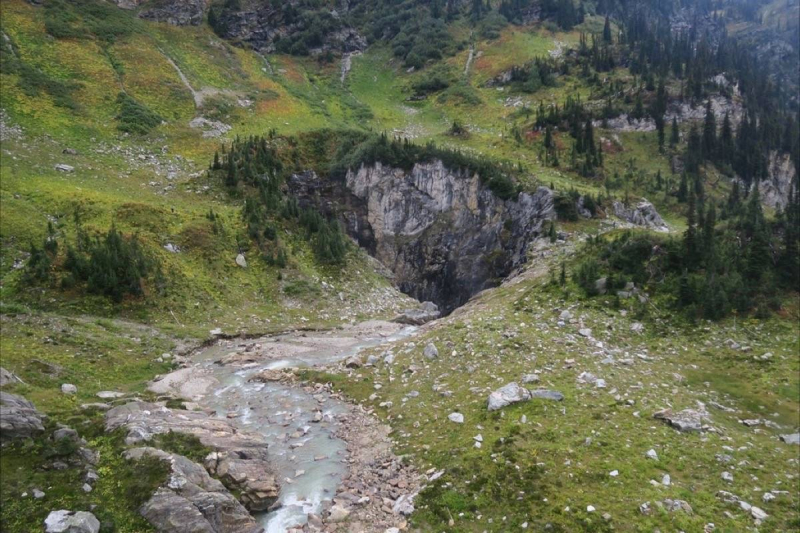Wells Gray Park Cave

Wells Gray Park Cave stands at the top of the list of the biggest caves in Canada. A Canadian government team was evaluating caribou numbers by helicopter in the spring of 2018, when the pilot, Ken Lancour, saw the deep, snow-filled depression. In honor of the iconic Sarlacc beast from Return of the Jedi, the team dubbed the cave Sarlacc's Pit. However, until a naming consultation with local First Nations can be performed, the name will remain unofficial.
Once the cave was snow-free in September 2018, a team led by geologist Catherine Hickson and archaeological surveyor John Pollack returned to the site and performed a partial descent into it, estimating the cave to be at least two kilometers (1.2 mi) long. The cave's physical dimensions were determined by the ground reconnaissance mission. In 2020, the crew expects to return for more in-depth explorations.
The discoverers want to keep the site a secret to prevent visitors from causing environmental damage to the cave. In addition, for the sake of preservation and public safety, the government of British Columbia closed the region surrounding the cave.
The cave's entrance, known as a wallet, is a dip within a remote valley in the Cariboo Mountains of British Columbia. The cave works as a drain for the glacier, swallowing glacial runoff and creating a flowing river. The cave's opening is unique in that it is a 145-meter vertical drop into the earth, with a pit large enough to fit the Statue of Liberty.
The cave stands at the bottom of a huge avalanche slope and is generally snow-covered for much of the year. Early fall may be the only time to visit the cave because the waterfall that fills the entrance is at its lowest flow; in the spring, meltwater flows of 5 to 15 cubic meters per second (177 to 530 cubic feet per second) impede entry. The cave may have been snow-covered all year until the twentieth century, indicating that it was not explored by First Nations people, and the technical equipment required, combined with the depth of the entrance shaft, suggests that passing mountaineers in recent decades are unlikely to have explored it.
Location: Cariboo Mountains, British Columbia, Canada.
Depth: 500m
Length: 2100m






